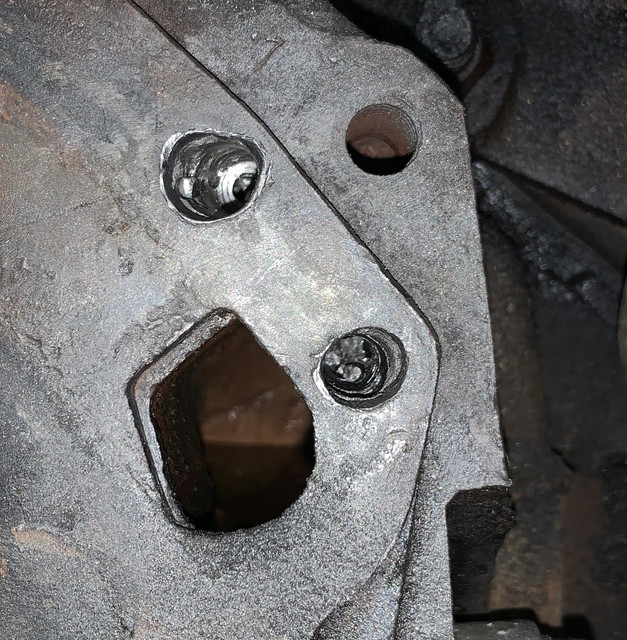- Joined
- Jun 14, 2019
- Messages
- 568
- Reaction score
- 174
- Location
- Coachella Valley (Palm Springs)
- My Car
- 1973 Convertible, 351 4v CJ, C6, Mach 1 Decor options, power: steering, brakes and windows, a/c, Rally Pac gauges, Deluxe interior.
[url=https://ibb.co/ZVjjKXW][img]https://i.ibb.co/zrMMbxG/s-l1600-2.jpg[/img][/url]
Yeah, in removing the water pump with bolts I'm sure hadn't been touched since being installed in May 1973, 3 of the ten broke. Two nearly flush with the block, one with about one inch showing.
I know how, I've got the finest collection of left-hand bits assembled and Kroil Oil at hand (lol). It's hard work boring directly into steel, but I know what I've got to do. I haven't learned anything new from a slew of How-To vids. I'm rather stuck at the part of keeping the bit in line with the bolt long enough to dig in -- I will try again to make a better dent with a punch, but I'm also thinking I don't want to hit so hard I just re-tighten the bolt.
Just posting this in case there are any special "been there, done that" tips from the hive mind.
I know how, I've got the finest collection of left-hand bits assembled and Kroil Oil at hand (lol). It's hard work boring directly into steel, but I know what I've got to do. I haven't learned anything new from a slew of How-To vids. I'm rather stuck at the part of keeping the bit in line with the bolt long enough to dig in -- I will try again to make a better dent with a punch, but I'm also thinking I don't want to hit so hard I just re-tighten the bolt.
Just posting this in case there are any special "been there, done that" tips from the hive mind.























































